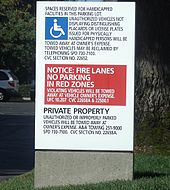
Oregon Parking Laws: Understanding the Basics
When you drive in Oregon, you need to know all the laws that apply to driving and safety. Of course, it is also important to know the laws related to parking. If you do not park properly, your vehicle may be a danger to other motorists. Also, if you park in the wrong place, you could be fined a large fine or return to the parking spot to find that your car has been towed. By understanding the basic laws of parking, you can minimize your risk.
Parking laws you need to know
There are a number of different places where you are not allowed to park whether you are in a car or not. You are not allowed to stop or park in a traffic lane on streets, roads, and highways. You may not park at an intersection or pedestrian crossing, or on a sidewalk or bike path. Parking on railroads or light rail tracks is prohibited. Also, you can't park twice in Oregon. This occurs when a vehicle stops or parks on the side of another vehicle that is already on the side of the road and parked. Even if you're only going to be there for a few seconds to drop someone off, it's illegal and dangerous.
Drivers may not stop on bridges, tunnels, or overpasses. You also cannot park between individual roads of a divided highway. If there is construction or road work going on, you are not allowed to park or stop nearby if it would interfere with traffic.
Parking in front of a public or private driveway and blocking access to the driveway are also illegal. When parking, you must be at least 10 feet from fire hydrants, 20 feet from marked or unmarked crosswalks at intersections, and 50 feet from traffic lights or a sign if your vehicle hides them from view. Never park in a disabled area or place unless you have signs and signs that will allow you to do so.
If you are parking on the same side of the street as an Oregon fire station, you must be at least 15 feet from the entrance. If you are parking on the opposite side of the street, you must be at least 75 meters away. When parking, you must be at least 50 feet from the nearest railroad track or light rail crossing.
While state laws are similar in many communities across the state, some cities may have their own laws and convenient schedules. It's a good idea to check local laws to be sure when you're parking. Also, you'll want to check the signs in the area, as they often tell you if parking is allowed and when.